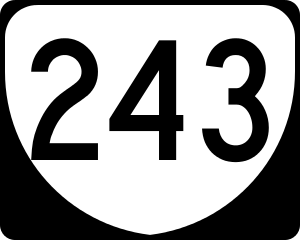 |
| (Photo credit: Wikipedia) |
This is another post in our current series
introducing readers to special education law's key concepts. Today's
post is about related services. This phrase is almost always preceded by
"special education and..."
Let me know if you are enjoying
this series. For some it is an introduction. For others it is a chance
to brush up on the key concepts...
Related Services
The IDEA defines related services as follows:
(A) IN
GENERAL- The term ‘related services’ means transportation, and such
developmental, corrective, and other supportive services (including
speech-language pathology and audiology services, interpreting services,
psychological services, physical and occupational therapy, recreation,
including therapeutic recreation, social work services, school nurse
services designed to enable a child with a disability to receive a free
and appropriate public education as described in the individualized
education program of the child, counseling services, including
rehabilitation counseling, orientation and mobility services, and
medical services, except that such medical services shall be for
diagnostic and evaluation purposes only) as may be required to assist a
child with a disability to benefit from special education…
(B) EXCEPTION—The term does not include a medical device that is surgically implanted, or the replacement of such device.
IDEA, § 602(26). See, 34 C.F.R. § 300.34.
The issue of related services has resulted in two decisions by the United States Supreme Court. The first decision was Irving Independent Sch. Dist. v. Tatro 468 U.S. 883, 104 S.Ct. 3371, 555 IDELR 511 (1984). The
Court affirmed the Court of Appeals holding that a procedure known as
clean intermittent catheterization was a related service because the
student could not attend school without it and, therefore, without the
procedure she could not benefit from special education. Tatro, supra. The
Supreme Court also affirmed the holding of the Court of Appeals that
clean intermittent catheterization is not exempted by the medical
services provision because the procedure did not have to be performed by
a doctor, it could be done by a layperson with an hour of training. Tatro, supra.
The second decision was Cedar Rapids Community Sch. Dist. v. Garret F. 526 U.S. 66, 119 S.Ct. 992, 29 IDELR 966 (1999). In
this case, the Supreme Court held that urinary bladder catheterization
and suctioning of tracheotomy plus various monitoring was a related
service. Garret F., supra. Applying the “bright line” test of the Tatro
decision, the Court held that because the related services did not have
to be performed by a physician, the medical services exclusion did not
apply and the schools were required to provide the services for the
student. Garret F., supra. The Court
specifically and emphatically rejected the argument raised by the
schools that the cost of providing the services was a defense. Garret F., supra.

































